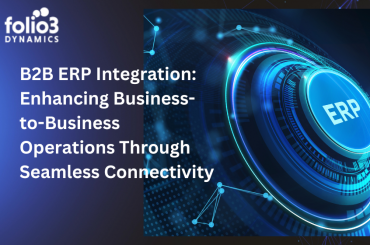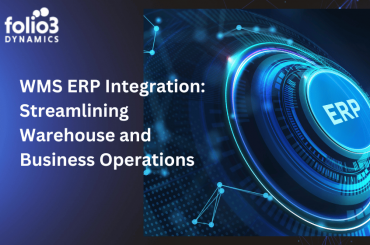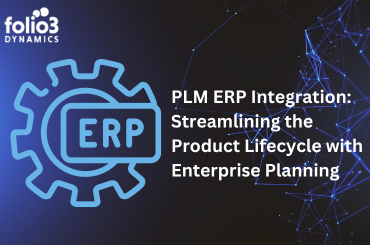Table of Contents
ERP is a piece of software that all of our organizations rely on to help them achieve their goals. Choosing the best ERP system for our company is one of the most important decisions we will make. The decision must be sound. Here are some criteria for selecting an ERP system to consider when making your decision.
When considering your ERP selection criteria and how they may affect each component, keep your business goals in mind at all times.
Top 10 ERP evaluation criteria:
- Requirements for businesses
- Upper management assistance
- Assistance to users
- Functional requirements
- Adaptation to the existing system
- Resources and budget
- Future scalability and technology
- Return on investment and total cost of ownership
- Consider and select options
- Customization is required.
What criteria are used to select ERP?
Given that this system will have an ongoing impact on every aspect of your business, there are several factors to consider when selecting an ERP. Although important requirements criteria may differ slightly depending on the business, you should ensure that your ERP system:
meets your company’s functional requirements; the system works as intended and helps rather than hinders.
- How long has your ERP provider been providing services to businesses like yours?
- What kind of user support is required for your ERP system?
- How much does your ERP system cost?
Your company’s ERP budget must be adequate.
You need a system that works across your entire organization, not a collection of incompatible systems, so think about how your system will interact with any existing systems that will remain in place.
How much customization do you need for the default software?
As you read our list of criteria for selecting an ERP, keep in mind your specific business issues and how they relate to each set of criteria, as well as how we respond to these questions below.
First ERP selection criterion: business requirements
Make a detailed list of all the ERP requirements you have. Make the most of the resources at your disposal to create a top-notch list. Speak with your purchasing manager and production personnel. Pay close attention to upper management as well as your customers and suppliers. Call current and previous salespeople. Order your ideas in ascending order after you’ve written them all down. Establish a clear understanding of the “must have” needs. The items in the next priority tier are optional, but it is generally agreed that including them will benefit the business. Any other items are essentially “nice to have” and belong in a lower tier.
This method will be greatly aided by an ERP requirements template, which will allow you to break down your required features into precise functionality. Rather than individual feature requests, our requirements form requests specific functions, such as how the general ledger automates regular transactions. Also, whether the software allows for rules to determine the amounts for GL transactions. This level of specificity will assist you in understanding the full range of a system’s capability and how its software can meet your requirements, such as whether it’s built-in functionality, custom functionality, or third-party integration.
The second ERP selection criterion is senior management support
This may appear to be a no-brainer standard. Its significance is all too often overlooked. Even if one selects the best ERP for the company, the project will most likely fail without the cooperation of upper management. Support entails more than just raising funds. Your management should show its support aggressively. When a resource from another department is needed, the manager can stifle progress by providing ambiguous support. You want to be confident that management genuinely supports the ERP, even if there is a short-term cost when deciding whether to support the new ERP or use the existing system.
In addition to calculating selection costs, your business case should focus on corporate goals and how ERP can help your company achieve them. Pitching senior management for ERP project buy-in may appear intimidating, but it is critical to the success of your project.
A third consideration in ERP selection is user support
Every functional area will have users in the new ERP. Make certain that the list of conditions reflects their wants and needs in order to gain their support. Regardless of where they work, these users will benefit greatly from the success of your ERP system. Inform those users that they will receive the assistance, training, and tools needed to use the ERP and generate value for themselves and the organization as a whole. Make them aware of the resources available to them as they adjust to the necessary changes. In exchange, they will assist you in using and benefiting from your new ERP. Ensure that the documentation users will need is available whenever and wherever they need it, and that it is of sufficient quality to meet their needs.
The fourth ERP selection criterion is functional requirements
Your company must first meet certain functional requirements before it can meet your change and update requirements. Is this ERP capable of handling sales orders that include both tangible products and services? It has to if that’s what your company sells. Your company has operations in several countries. Are multiple currencies and the ability to interact with various tax systems in those countries included in the ERP accounting components?
Consider any ERP components that your business may not require. If your business is distribution and you don’t do any manufacturing, can you easily get around any work-in-process requirements imposed by an integrated inventory system found in some ERPs?
Your ERP selection criteria should take into account the demands and preferences of each department. Specific industries and departments will have very specific functional requirements. Using your ERP should be easier for all departments, not more difficult. Your supply chain should understand whether your ERP will interact with their suppliers and provide shipment tracking on the new platform. Sales want to know if ERP can handle multi-tiered orders and how it will manage different sales areas. In your list of ERP requirements, make sure to include the needs of each department.
Integration with existing systems is the fifth criterion for selecting an ERP.
The majority of businesses that choose an ERP have other systems that meet their needs perfectly, so they are not interested in changing those systems in addition to their ERP. What remains to be seen is how these systems will integrate with ERP. Almost always, there are common data items. Can ERP access and read data already stored in another system? Will you allow the same data to exist, and how will you keep those independently updated data elements compatible? Will modifying the other system to use the ERP data better meet your requirements?
What integration tools are included with this ERP? It should have a simple integration, such as.csv files, for sporadic data updates. This type of update is ineffective and may be too slow for regular use. To quickly transmit data between computers, a more modern method of operation is to use XML files and web services.
Customers and suppliers frequently use electronic data interfaces, or EDIs, to exchange data between businesses. If this is required, ensure that your ERP can accommodate it.
Budget and resources are the sixth criteria for selecting an ERP system.
What are the financial resources available for an ERP system? If you only have $10, your selection criteria must be extremely strict. According to a 2021 Software Path analysis, you can expect to spend around $9,000 per system user on average. This is a substantial investment, and it serves as a reminder that selecting an ERP system is a long-term decision. Because most ERP systems will be in use for ten years or more, ongoing support and maintenance for both the infrastructure and the ERP must be budgeted for. Your decision today will affect future spending plans.
Who will put in the time and effort required to select and implement ERP? Although it would be ideal to devote full-time resources to the project, many businesses will opt for part-time workers. Planning is required to determine who will handle the critical tasks that personnel currently handle while focusing on ERP.
The size of your company may influence your ERP budget. The most recent Software Path ERP study compiled budget data from tens of thousands of ERP projects to determine the average cost per user for various business sizes. It’s worth noting that according to their ERP project report, healthcare organizations frequently have higher expected budgets per user.
In order to find the best software, you should include requirements, resources, industry, and company size in your ERP selection criteria.
The seventh decision criterion for ERP is the technology and future scalability
These issues concern both the software used to create your ERP system and the hardware required to run it. We anticipate further progress and innovation in both fields. We don’t want them to use cutting-edge technology, but we also don’t want them to use outdated technology. Simultaneously, we want to buy our ERP from a company that has a proven track record of keeping up with technological advancements and is committed to continuing that strategy.
The eighth ERP selection criterion is ROI and total cost of ownership
Add up all of the extra costs that this ERP will cause you. There will be an initial purchase price as well as some initial consulting costs. Your servers and networks may require frequent updates. You will have to pay for training and temporary staff while your employees are implementing ERP. Every year that you use the ERP, you will be charged for support and maintenance.
You will benefit from lower costs of performing work at the same time. You may see an increase in income because you can now offer your customers services and goods that were previously unavailable due to this ERP.
Calculate your return on investment after deducting the costs and benefits over time. The majority of businesses want a minimum return before making an investment. Check that the ROI for this ERP meets your company’s needs.
The ninth criterion for ERP selection is evaluating and selecting options
There are now alternatives to the traditional ERP system, which runs on an on-premises server and is supported by internal IT personnel. Many businesses opt for an ERP that is built on a SaaS foundation and runs in the cloud. The upfront cost is reduced by avoiding monthly “rental” payments that include the software and the majority of support requirements.
You can use a hybrid strategy in which your company owns the ERP but runs it on shared servers in the cloud.
Today, open source software is widely used in the development of ERP systems. These benefit from the software being either free or extremely cheap to purchase. You can completely customize it because you have access to the open-source source code. Users constantly update open source ERP, reporting and correcting flaws. There is no need to wait for a development company to release a new revision because those changes are immediately available to all customers.
If you are concerned about these possibilities, your decision will indicate which ERP system selection criteria are critical for your company.
ERP criterion number ten: customization is required
Customization is never required for the perfect ERP. Because no customization is likely to be perfect, it will be a selection criterion. Determine the intended level of customization and whether it is actually required in your workforce. Today’s ERP systems rely on data gathered from tens of thousands of clients. Is there anything unique about your company that sets it apart from the rest? There’s no way. If you can use an existing ERP to simply work around your desired customization, that customization is not a selection criterion. It is not a criterion in and of itself, but the ability to perform such customization later is a criterion if it can be delayed while using a current ERP and evaluated later.
If, on the other hand, modification is required, consider ERP systems in terms of how simple and effective customization will be. Do you hire developers who are fluent in the required programming language? Are there any job opportunities for developers with this level of talent?
How will your ERP handle the modifications? Can you use business objects or other forms of validation to ensure compliance with other ERP components? Can you implement your change without interfering with other ERP components?
Some ERPs will provide better answers to your questions than others, which will help you narrow down the ERP systems you have to choose from.
Bonus: ERP Software Selection Checklist
Use a comprehensive checklist to ensure the success of your ERP selection project. Aside from that, you should tailor your checklist to your company’s needs, but our list should serve as a good starting point. Download our complete ERP selection checklist to ensure you don’t miss any steps when selecting your ERP.
-
The Selection of the team
- Selecting the project manager
- Putting your selection team together
- Obtaining a C-Level Sponsor
-
Collect Requirements
- Create a flowchart of your current business operations
- identifying the major business challenges
- Consult with each department about its problems.
-
System prerequisites
- How many people require access
- What type of hosting should you choose?
- What are your language and financial requirements?
-
Offerings from vendors
- What kind of assistance do you require?
- Do you need a third-party project management team?
- What critical data sets do your legacy systems contain?
-
ROI forecasting
- Determine when the total cost of ownership will be incurred.
- Set up reporting on ROI projections.
- Create a strategy for change management.
-
Choice of vendor
- Examine the ERP systems used by similar organizations in your industry.
- Make a brief list.
- Create an RFP to select an ERP
-
Choosing an ERP
- Building your team
- Examine the responses to the RFQ.
- Accept a purchasing decision
The preceding checklist is a simplified version of our 60-step ERP selection process, which you should use.
If you have gone through our list and know the answers to all of these ERP selection criteria, you are well on your way to selecting an ERP that will serve your business both today and in the future.





